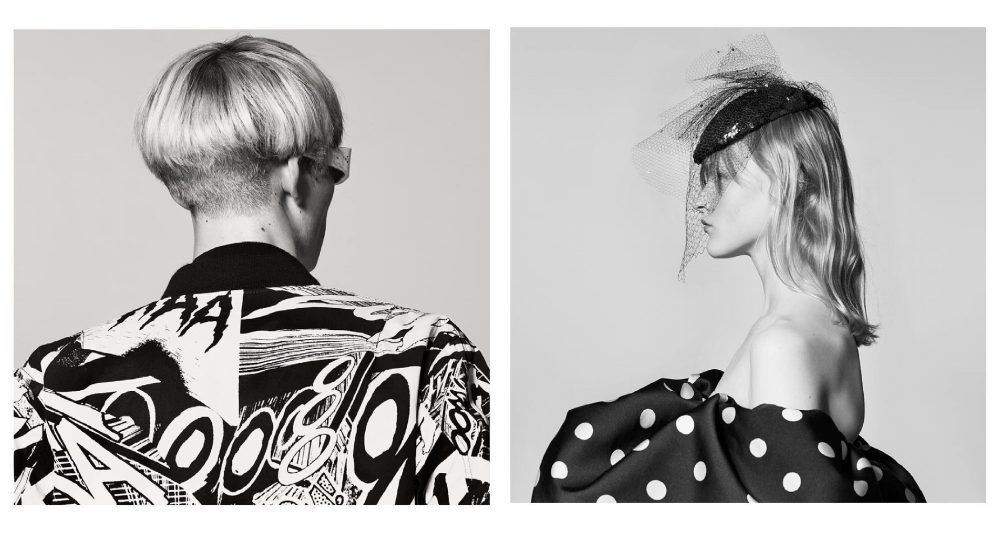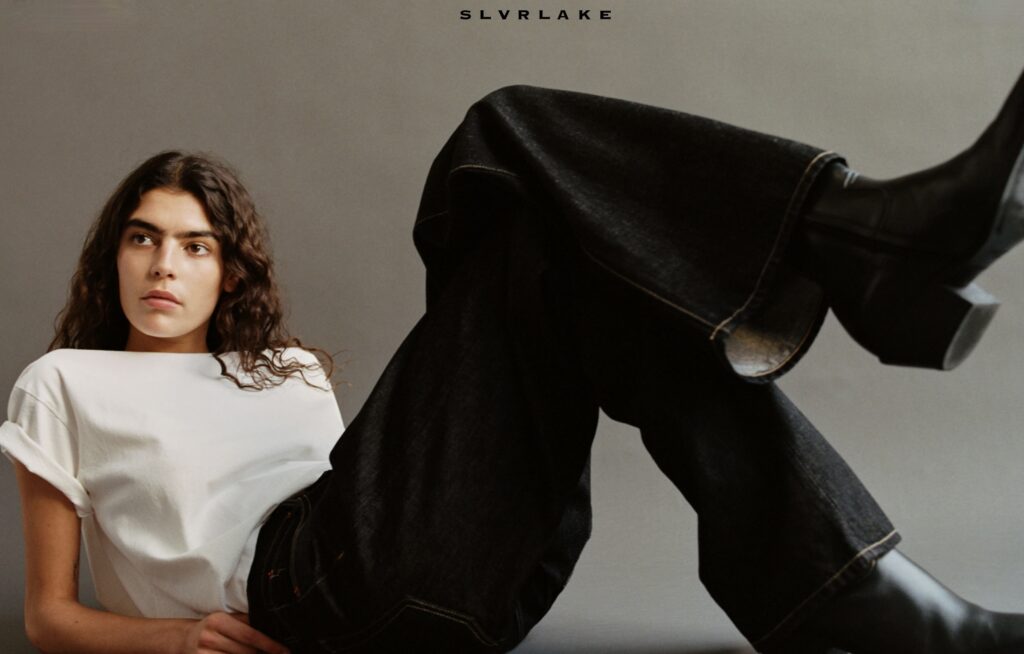Chanel built a beach – complete with real French sand and a working wave pool – for Spring/Summer 2019, an apt move considering it just acquired a swimwear brand. Saint Laurent had models walking on water against the backdrop of a shimmering Eiffel Tower. Rick Owens set a triangular metal structure on fire and paraded cat-walkers around it (at the very same time that Trump’s Supreme Court nominee Brett Kavanaugh was testifying, largely about beer, before the Senate Judiciary Committee), and Julie de Libran staged her Sonia Rykiel show in the middle of a grand Left Bank boulevard, on Allée Sonia Rykiel, the street very recently named after the house’s late founder.
Yet, despite all of this pomp and circumstance, nothing outshone the most highly-anticipated and since talked-about show of the month, Hedi Slimane’s debut for Celine. The former Dior Homme god and two-time Saint Laurent defector showed his first collection at the house formerly helmed by Phoebe Philo and the responses to the collection – one that oozed “the stubborn, idiosyncratic grunge-meets-formal style best meme-ified as ‘the Saint Laurent aesthetic,’” as Highsnobiety’s Alex Rakestraw put it so well today – were strong.
Two Op-Eds published by menswear site Highsnobiety do a pretty good job of hitting on some of the opposing points within the larger narrative of Hedi for (the newly accent-less) Celine, which overwhelmingly understands that love-what-Hedi-did or hate-what-Hedi-did, what Hedi did, clothing-wise, will sell. And as a result, LVMH, the Paris-based luxury goods conglomerate that owns Celine (and Louis Vuitton and Givenchy and Loewe and Marc Jacobs and Christian Dior and Pucci and Rimowa and … etc.) will be raking in the Hedi Slimane-driven revenue as a result.
In an article, entitled, “I Don’t Hate Celine for Making Clothes People Wear,” Alex Rakestraw notes that the clothing was good. “Tailoring for men. Glamor for women. Filter through a ’70s rock club and paint it black. It was Slimane’s tried-and-true look, sent from Dior by way of Rive Gauche: leather jackets, biker boots, neutrals, slim fits, the occasional metallic detail.”
Mr. Slimane, according to Rakestraw, “slants his collections toward reality — in cynical terms, commercialism; in positive ones, democracy.” This means that “the target luxury customer … someone who can reliably afford to pay full price for garments (not resell, not sample sale price, but MSRP) is older, wealthier, and more conservative in habit,” will be pleased.
These “bankers, architects, and software engineers who appreciate ‘the finer things’ — staple pieces like tees and sneakers that let them associate with status brands in a way they’re already comfortable with,” will have stuff to buy and wear on weekends. This is not a bad thing, per Rakestraw. After all, he writes, “Putting out products people want is how brands are established. Often those products are what enable a business to burn millions on fashion shows.”
On the other hand, the site published another Op-Ed, this time by StyleZeitgeist founder and editor Eugene Rabkin, titled, “Hedi Slimane’s ‘Saint Celine’ Destroyed Phoebe Philo’s Legacy” – or as Highsnobiety’s hyperlink reads, “Hedi Slimane Celine SS19 Negative Review.” (Note: Rakestraw’s article lives behind the hyperlink – you guessed it! – “Hedi Slimane Celine SS19 Positive Review”).
In his take, Rabkin, who is notorious for his biting critiques (menswear’s version of Cathy Horyn, if you will), had this to say about Slimane’s first Celine outing: “What Slimane has is a tired and trite five-letter vocabulary that has long been co-opted and watered down for the masses by high street brands from The Kooples in Paris to Topshop in London.”
“A real designer,” Rabkin states, “understands that a vision is a dynamic thing, not a static one, and that his or her role is to build upon that vision to create something, if not entirely new, then at least fresh … What we got from Slimane were banal sartorial archetypes that we’ve seen way too many times. In fact, by now, Slimane’s banality is his most defining feature — a signature of sorts.”
Still yet, Rabkin states, “This hot mess” will sell. That is something that is almost universally agreed upon when it comes to Slimane, Celine debut included. As for whether that makes the design “good” or “real” is still up for debate, as is the question of whether such an inquiry (and those “good,” “real” qualities) is even relevant given the conglomerate-driven, overly corporatized industry that is fashion in its most current state.
This season made one long-standing principle in the business of fashion very, very clear – whether it be by way of Riccardo Tisci’s very wearable offerings at his Burberry debut or Slimane’s reliance on his tried-and-true aesthetic and the inherently marketable pieces that come along with it: Fashion might be trendy (particularly in the age of Insta) and the merits of “real” design might still be relevant and worth pushing for, but the money that can be made from it (and the hype that can be driven by way of social media to fuel more sales) is what matters more than anything else.
The appointment of Virgil Abloh to the helm of the Louis Vuitton menswear division, the brand’s collaboration with Supreme before that, and still yet, the recent announcement that Versace will be acquired by Michael Kors Holdings (likely because it is too difficult to exist and grow as an independently-held brand in the corporate fashion landscape) and the other recent indie buy-outs at Dries Van Noten and Missoni also speak very clearly to this fact, one that has inevitably tripped the scale of favor commerce over art, something that is becoming increasingly obvious as the conglomerates buy up more names in the fashion ecosystem.
In this equation, Slimane’s debut collection is almost certainly going to be one of the most successful of the season, critics (and any emphasis on “good” design) be damned.











